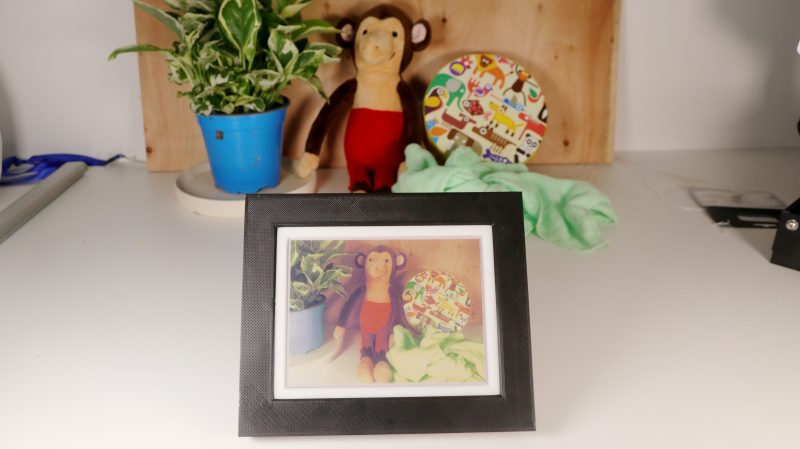LCD photo frames never really caught on — by emitting light, they didn’t seamlessly blend in with a home’s decor in the way printed photos do. [Sprite_tm] decided to see if a color e-Ink screen could do any better, and whipped up a WiFi-enabled photo frame using a Waveshare display.
The part in question is a 5.65-inch display with 640 x 448 resolution, and is capable of displaying seven colors. It’s not designed to display photorealistic images, so much as display simple graphics with block colors. However, with some dithering, [Sprite_tm] suspected it might do an okay job. An algorithm that uses Floyd-Steinberg diffusion and the CIEDE2000 color space takes regular RGB images and breaks them down into dithered images that are displayed using the screen’s 7 available colors.
The build relies on an ESP32-C3, which drives the display and fetches new images daily over WiFi. Thanks to the e-Ink screen, which uses zero power when not updating, the whole setup runs off two AA batteries and a Natlinear LN2266 boost converter.
There are some limitations; the screen’s color space is altogether quite limited, and images don’t look very high-fidelity in such low resolution. However, it does an able job of displaying photos for a device that was never designed to do so. It looks rather handsome all wrapped up as a 3D printed picture frame, and [Sprite_tm]’s monkey test photos are very cute.
Files are on GitHub for those that wish to roll their own. We’ve seen similar works before, like this e-Ink wall-hanging newspaper display that keeps up with the times. If you’ve got your own neat e-ink build, hit us up on the tipsline!
















Interesting read. I gotta try this when eink tech gets cheap or when I start seeing e readers at thrift stores lol
I’m still dreaming of one of those big wall calendars that hangs in the kitchen and has all the family appointments and schedules in it for the whole family to easily see whenever you walk by it. One of those made out with e-ink and with wifi to display a Google calendar or similar. But every time I check the price for e-ink displays is still too expensive in the desired size. Even if I would combine like 4 smaller displays into one build.
The price is still the factor prevent time from playing this.
it seems someone did it! https://shop.invisible-computers.com/products/invisible-calendar
Personally I think like the picture, it has a kind of old, faded 50s colour photo aesthetic, I know it’s just an artifact of the display and process but in a happy accident I think it works.
At first I was like, “Sprite_tm”.. i’ve seen that name before… oh right, they work at Espressif and are all over the place! Awesome build!!
I have been making a wifi picture frame library that uses original kindles, and links to Stablehorde – the online stable diffusion api, or to a locally running stable diffusion with automatic1111. Initially I was doing this as a way of highlighting text in a book and getting it to draw this description, however this has now morphed to a way of voice controlling the picture frame by voice.
It can also be used as an endpoint to pass the images through to as they get generated.
Using the mobile page, you can use voice control to say “a cat wearing a pirate hat” or whatever, and it will draw it and then display it on the kindle.
I am due to upload a new update with a bunch of new features to it shortly once I can record a video, however here is there is a pic and a couple of videos of it working:
https://github.com/diggedypomme/Kindlefusion/raw/main/documentation/1682950016238.jpeg
https://youtube.com/shorts/D7ejkuGo5Aw
https://www.youtube.com/watch?v=SueGVpyrgG8&ab
https://github.com/diggedypomme/Kindlefusion
At around £10 per kindle on ebay, plus the time for making the frames, it still makes for a nice present so I have been making them for friends.